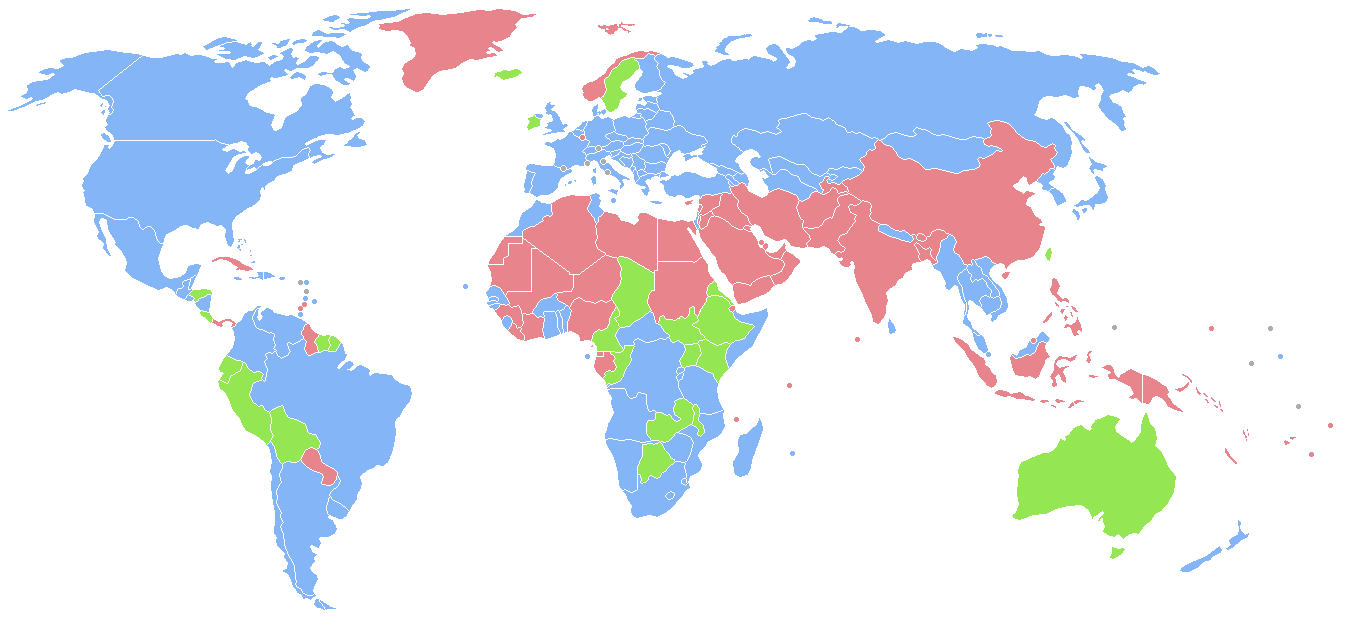I try to see what happens if at one point in time, two diferent populations, each with its own Y haplogruop, 1 and 2, mix together, let's say in proportion of 1 to 99. At the initial moment the Y haplogroup 1 population represent only 1% of the mixture, and fertility is the same for both populations, but because of any biological reasons there is a difference between the number of boys and girls who are born in families of men of haplogrup 1 and 2. I assumed that from 10 offsprings, males 1 have 6 boys and 4 girls, and males 2 have 4 boys and 6 girls.
Then I calculated what would happen with the frequency of this two haplogroups in the mixed population over the next generations. Their evolution is spectacular.
1(%) ... 2(%)
1 .........99 --> initial
1,49.....98,51
2,22.....97,78
3,3.......96.7
4,86.....95,14
7,12.....92.88
10,32....89,68
14,72....85,28
20,56....79,44
27,97....72,03
36,81....63,19
46,63....53,37
56,72....43,28 --> XII generation (300 - 360 years)
66,28....33,72
74,68....25,32
81,56....18,44
86,9.....13,1
90,87.... 9,13 --> XVII generation (425 - 510 years)
93,72.... 6,28
95,73.... 4,27
97,11.... 2,89
98.05.... 1,95
98,69.... 1,31
99,13.... 0,87 --> XXIII generation (575 - 690 years)
99,42.... 0,58
99,61.... 0,39
Since the XII generation (300-360 years), the haplogroups proportion has changed in favor of Y haplogroup 1.
In the XXIII generation (575 - 690 years) haplogroup 2 is already below 1%.
Other important effects:
a) - Mitochondrial haplogroup of the population 2, which represented 99% at the beginning, will increase, reaching almost 100% in a verry short time.
b) - Although haplogroup 1 has become overwhelming, in fact the initial autosomal genetic heritage proportion of the mixture is kept, 1 to 99.
c) - This may explain the success of the new branches of haplogroups, some of which spread very rapidly against the oldest one or his own basal branches, that were widespread before. Otherwise their chances of spreading would be virtually non-existent...
If it has a correspondent in reality, among other things this can explain the so call "sudden population extinctions" if we take into account only the chromosome Y. But these extinctions do not exist autosomaly!
I think it be one explainations of the fast expansion at high proportion of R1b, R1a, or other Y haplogroups.
So, probably, mixing with other small groups, many populations like Neolithic Farmers switch Y chromosome, but their genetic heritage remain at high level until today.
What do you think? :wary2:
Then I calculated what would happen with the frequency of this two haplogroups in the mixed population over the next generations. Their evolution is spectacular.
1(%) ... 2(%)
1 .........99 --> initial
1,49.....98,51
2,22.....97,78
3,3.......96.7
4,86.....95,14
7,12.....92.88
10,32....89,68
14,72....85,28
20,56....79,44
27,97....72,03
36,81....63,19
46,63....53,37
56,72....43,28 --> XII generation (300 - 360 years)
66,28....33,72
74,68....25,32
81,56....18,44
86,9.....13,1
90,87.... 9,13 --> XVII generation (425 - 510 years)
93,72.... 6,28
95,73.... 4,27
97,11.... 2,89
98.05.... 1,95
98,69.... 1,31
99,13.... 0,87 --> XXIII generation (575 - 690 years)
99,42.... 0,58
99,61.... 0,39
Since the XII generation (300-360 years), the haplogroups proportion has changed in favor of Y haplogroup 1.
In the XXIII generation (575 - 690 years) haplogroup 2 is already below 1%.
Other important effects:
a) - Mitochondrial haplogroup of the population 2, which represented 99% at the beginning, will increase, reaching almost 100% in a verry short time.
b) - Although haplogroup 1 has become overwhelming, in fact the initial autosomal genetic heritage proportion of the mixture is kept, 1 to 99.
c) - This may explain the success of the new branches of haplogroups, some of which spread very rapidly against the oldest one or his own basal branches, that were widespread before. Otherwise their chances of spreading would be virtually non-existent...
If it has a correspondent in reality, among other things this can explain the so call "sudden population extinctions" if we take into account only the chromosome Y. But these extinctions do not exist autosomaly!
I think it be one explainations of the fast expansion at high proportion of R1b, R1a, or other Y haplogroups.
So, probably, mixing with other small groups, many populations like Neolithic Farmers switch Y chromosome, but their genetic heritage remain at high level until today.
What do you think? :wary2:
Last edited:



